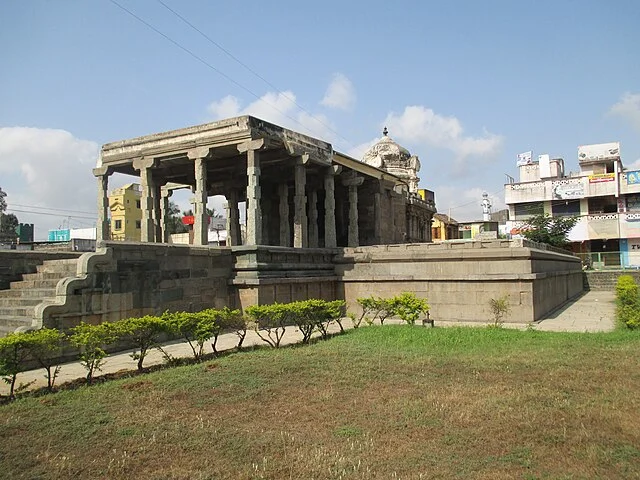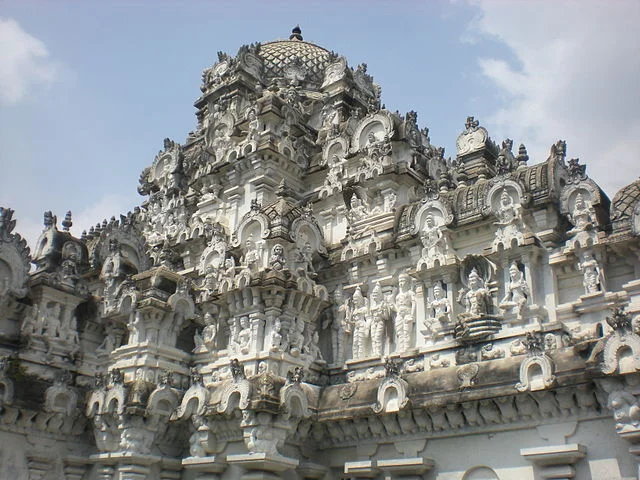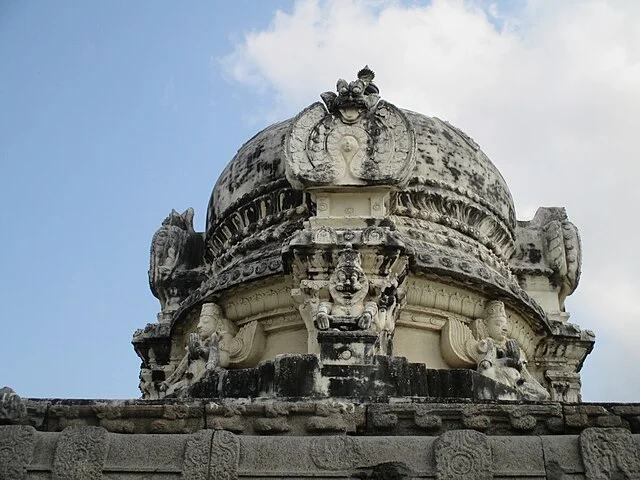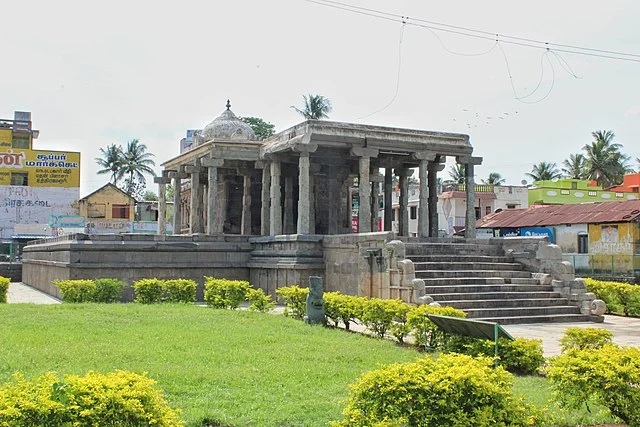Vaikunta Perumal Temple, located in Kanchipuram, Tamil Nadu, India, is an important example of early Dravidian architecture. The Pallava king Nandivarman II built the temple during the 8th century AD. This temple is dedicated to the Hindu god Vishnu, reflecting the strong religious significance of the Pallava period.
Get your dose of History via Email
Architectural Style

The Vaikunta Perumal Temple follows the typical Dravidian architectural style. It has a square plan and features a three-tiered vimana (tower). Each tier contains images of Vishnu in different forms, symbolizing his many avatars. The vimana’s design shows a clear evolution from earlier Pallava temples, showcasing the growing sophistication of Dravidian architecture.
The temple’s hall, or mandapa, includes many carved pillars. These pillars display detailed carvings of scenes from the lives of Pallava rulers and various mythological stories. Such carvings serve as historical records, offering insights into the social and political landscape of the Pallava dynasty.
Religious Significance
Vaikunta Perumal Temple is one of the 108 Divya Desams, which are the sacred abodes of Vishnu. The temple enshrines Vishnu in a seated posture, a unique feature compared to other temples where the deity is usually in a reclining or standing position. The deity is worshipped as Vaikuntanatha, a manifestation of Vishnu as the lord of Vaikuntha (heaven).
This temple’s annual festival, Vaikunta Ekadashi, attracts many devotees. During this time, people believe that the gates of Vaikuntha open, offering them a direct connection to Vishnu.
Historical Importance

The temple stands as a valuable source of historical information about the Pallava dynasty. Inscriptions found within the temple describe the reign of Nandivarman II and the political landscape of southern India during his time. These inscriptions, written in Tamil and Sanskrit, record temple grants and describe the temple’s maintenance.
Influence on Later Architecture

Vaikunta Perumal Temple significantly influenced later South Indian temple architecture. The three-tiered structure of the vimana became a model for later Chola and Vijayanagara temples. Its detailed carvings and inscriptions also inspired future temple builders to incorporate similar elements.
The temple represents a key phase in the evolution of South Indian temple design. Its balance of artistic detail and religious function laid the groundwork for later architectural developments in the region.
Conclusion
Vaikunta Perumal Temple is not only a religious site but also a historical monument. It offers valuable insights into the architectural and cultural achievements of the Pallava dynasty. The temple’s design, carvings, and inscriptions continue to be studied by historians and archaeologists to better understand the era’s political, religious, and social dynamics.
Source:

